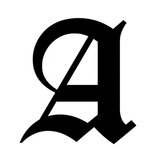The Hermit Painters of Pyongyang

The Gallery with No Names
North Korea’s greatest artists are ghosts—unknown, uncredited, unseen beyond their borders. At the center stands the Mansudae Art Studio, one of the world’s largest art production houses, established in 1959 and often described as employing thousands. Pyongyang’s painters are both state propagandists and prisoners of beauty—masters of realism whose work the world is largely forbidden to buy.
Visual cue: panoramic shot of Mansudae Studio or Kim Il-sung murals.
Art as Ideology
After WWII and the Korean War, art became a weapon of narrative. Soviet-style socialist realism was adopted to glorify the Kim dynasty; every mural, statue, and oil painting was designed to project utopia and inevitability. As Kim Jong Il wrote in his 1992 treatise “On Fine Art,” “Art must serve the Party and revolution.”
Visual cue: archival mural or studio floor where artists paint Kim portraits.
The Mansudae Machine
Mansudae operates like an industrial complex with distinct divisions for sculpture, oil painting, ceramics, posters, and more. Through Mansudae Overseas Projects, its output traveled abroad, with clients in parts of Africa including Namibia, Zimbabwe, and Senegal. A signature example is the African Renaissance Monument in Dakar (2010), taller than the Statue of Liberty and built by North Korean sculptors.
Visual cue: photograph of the African Renaissance Monument.
The Paradox of Perfection
Painters spend years mastering state portraits, yet individual authorship is suppressed; signatures give way to collective seals. Training flows through the Pyongyang University of Fine Arts, but stylistic deviation is discouraged. Like medieval guilds or Soviet brigades, the system elevates craft while erasing the individual, creating a perfection that feels impersonal.
Visual cue: close-up of meticulous brushwork on a propaganda painting.
Smuggling the Sublime
Outside curiosity fuels a shadow market. Western collectors hunt for canvases via Beijing or Berlin, and occasional exhibits—such as a 2010 Vienna show—have attempted to present the work. Sanctions complicate sales, seizures occur, and the global black-market value is sometimes estimated in the millions. The ethical paradox remains: buying beauty risks funding a dictatorship.
Visual cue: clandestine gallery photo or headline about seized artworks.
The Psychology of Isolation
The emotional tone is serenity welded to heroism—smiles held just a beat too long, skies always clearing. Artists raised inside a closed ideological loop paint with the reverence of monks copying sacred icons. In this sense, North Korean art functions as emotional infrastructure: manufactured feeling that sustains belief.
Visual cue: close-up of workers or soldiers rendered with euphoric expressions.
Echoes in Global Art
The model has unexpected rhymes with today’s AI collectives and ghostworkers who train diffusion systems: anonymity, centralized patrons, aesthetic control. China’s revivals of “Red art” and continuing African commissions echo Mansudae’s export logic. The question lingers of where authorship ends and apparatus begins.
Visual cue: side-by-side comparison—North Korean mural and an AI-generated propaganda-style poster.
The Beauty We Cannot See
This is the tragedy of perfect art without freedom. As defector-artist Sun Mu put it, “My paintings look the same—but they no longer lie.” If art’s purpose is truth, what happens when truth itself is banned?
Visual cue: a dimly lit studio, a single brush resting beside an unfinished portrait.





